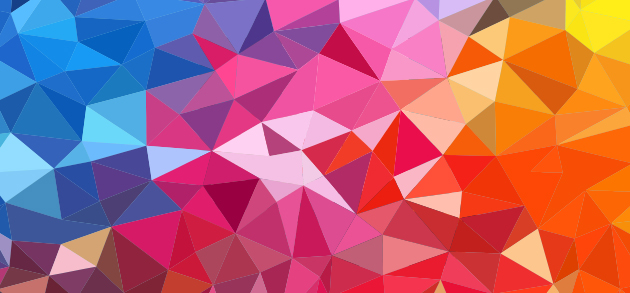In this post, I take a look at how graphic designers can use colours effectively to boost your brand. Along the way, I’ll play Mythbusters with an image you’ve probably already come across online.
Is colour psychology a scientific fact?
Colour psychology is the theory that certain colours are linked to certain feelings. In a sense, each colour has a range of “meaning” that will be triggered in a viewer’s brain. Applying colour psychology to marketing means selecting colours for your brand that will subconsciously influence people to feel a certain way.
Let’s tackle the elephant in the room straight away: Is it actually true?
The answer is yes. Well, actually, the answer is technically no, but in a roundabout way, yes. This will take a bit of explaining.
The famous Colour Emotion infographic
Here’s a helpful guide that does the rounds of the internet once in a while. Perhaps you’ve seen it before:
This helpful chart seems to have hit the internet in early 2013, and has been circulated as gospel ever since. As far as I can tell, it was designed by The Logo Company, although the frequent reposts tend to muddy the trail of attribution.
It’s absolutely fascinating. The first time you saw it, I’m sure you were blown away, just as I was.
But how closely have you looked at it? Can you see some glaring inconsistencies?
First of all, I question some of the classifying words. They’re bundled in triplets, but a couple of the descriptors just don’t seem to fit: Is Confidence really a partner emotion to Friendliness and Cheerfulness? Wouldn’t it sit better with the strength-related blue words? Similarly, I’m not convinced that Wisdom is naturally linked to Creativity.
Then there are a couple of specific logos that just defy the rules in a glaring way:
- Does Harley Davidson approve of being called friendly and cheerful?
- Surely Apple’s brand identity suggests they should have chosen a red or purple logo?
- Monster energy drinks most certainly don’t advertise themselves as standing for peace, growth and health.
- Avis and Hertz, two rental car businesses with just about everything in common, apparently approach life very differently. If this chart is true, I’d be worried to ever rent from Avis again!
- Google and eBay apparently posses a sense of diversity that is not shared by YouTube, Facebook and Wikipedia.
- And so on…
“But last week you said…”
I’m not contradicting what I said in my last post, though. Although there are obviously flaws in this broadly accepted ideal of colour psychology, that is not cause to throw the baby out with the bath water.
For one thing, despite certain elements, there are a lot of valid points to note in the graphic above. Notice particularly:
- Similar companies fall in similar bands.
- Social networking and communication companies are clustered in the blue and purple zone
- Food brands are associated with red, orange and yellow (science is pretty clear on this one – warm colours promote appetite, where as cool blues and dark greens are psychologically unappetising).
- Script-style typefaces are almost exclusive to red logos.
The Chicken and the Egg of branding
As I said earlier, the scientific validity of colour psychology is a “yes-but-no-but-yes” issue. Different research has offered different results as to whether humanity responds in certain ways to certain colours.
The prevailing theory at the moment is that we do attach emotion to colour, but that this may be a learned response, rather than an innate one. It is not hard-wired into us from birth. It’s nurture, rather than nature; each of us will react to stimuli in different ways depending on our experiences.
But then, if we make mental and emotional associations based on our experience, then we end up with something of a cycle. We see above that Facebook, Twitter, Intel, IBM and DELL all use blue logos. This commonality could then become an association between strong technology organisations and the colour blue, thus proving the colour psychology theory in a backwards manner.
It is something of a chicken-and-egg puzzle in knowing which came first; did IBM choose blue branding because it represented dependable technology, or did dependable technology come to be associated with blue because of the branding?
Making your choices
The current understanding of colour psychology may still be spotty, but it does point to the fact that, in a given society, emotional reactions to colour and shape are very consistent. What you feel in response to a particular image is likely to be similar to most people in your demographic.
Designers understand these cultural meanings and psychological connections. We look at how a brand’s colour scheme and choice of font will communicate with people and make them feel. And most of all, we can help businesses make branding choices that will appeal to their target market.
In terms of making sales, it is vital that your customers perceive your brand colour to be appropriate for your product.
This is why, if you are preparing a graphic design brief, it is imperative that you are able to define both your business’ style and your target demographic. Flowery flowing text on a pastel pink background just won’t work as a logo for company called Tough Impact Demolition.
Well, not in our society anyway…


